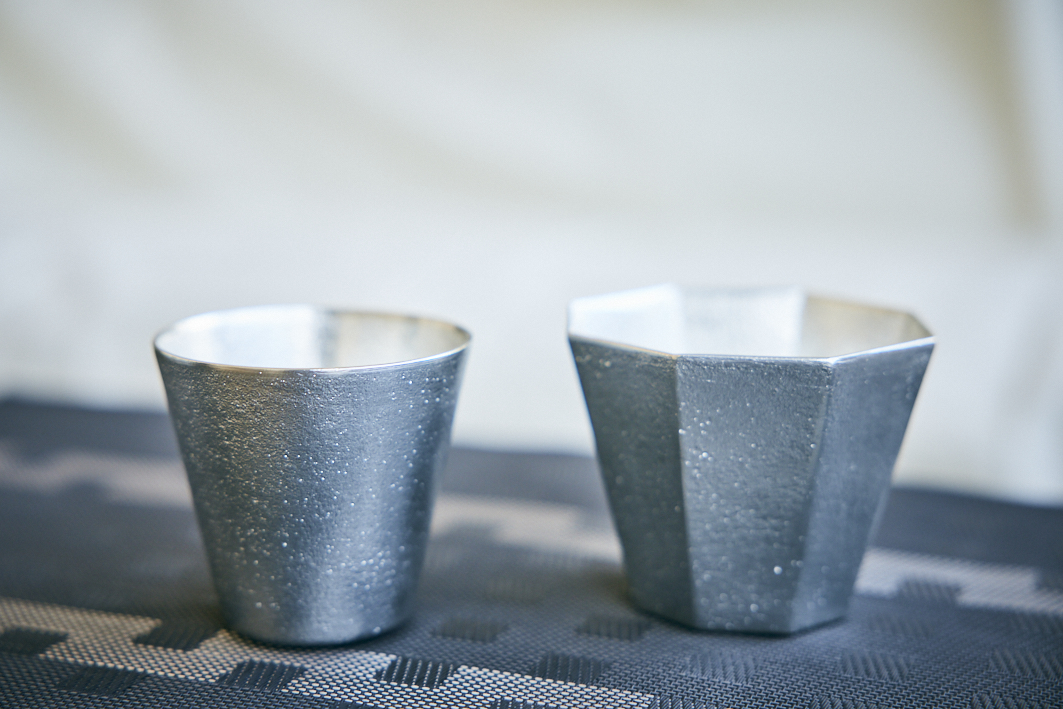Edogawa Craft Stories

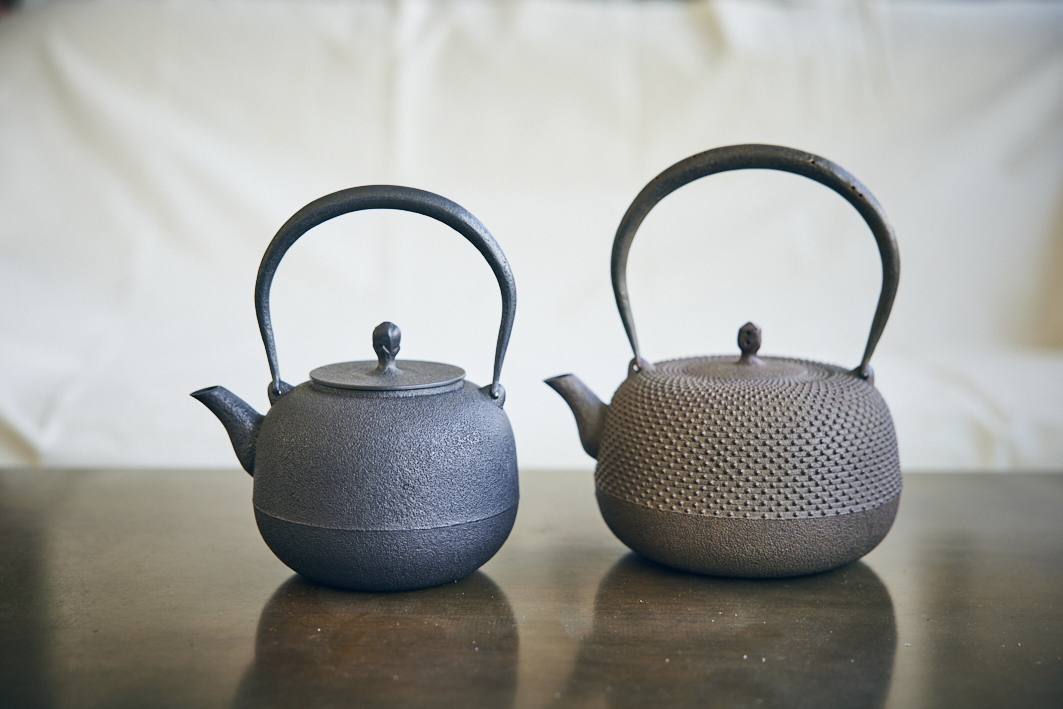
Cast in Iron: Works for Modern Life
Edo Tetsubin Kobo / Komatsugawa Chuzosho
Yokotsuka Yutaka
In a quiet corner of Komatsugawa Techno Town, home to a cluster of industrial workshops, stands Komatsugawa Chuzosho. Inside the studio, tetsubin (iron kettles) line the shelves, each with a name of its own. “Fuji,” with its gently sloping body evoking the base of Mount Fuji and a knob shaped like Diamond Fuji. “Asagao,” adorned with patterns of the morning glory (asagao), a flower beloved by the common people of Edo. “Tama-arare,” covered in a traditional arare (hailstone) texture. Each kettle draws from scenes in nature and Japanese tradition, defined by their thin walls, soft outlines, and elegantly subdued wabi-sabi aesthetic—hallmarks of Edo tetsubin.
The kettles are finished with natural urushi lacquer, allowing the texture of the iron and hand-pressed surface patterns to shine through. The design, casting, and finishing are all carried out by Yokotsuka Yutaka himself, using traditional casting techniques that date back to the early Edo period.
Casting (chuzo) is a process in which metal is heated until molten, then poured into a hollow mold made from sand or clay and allowed to cool and harden. The finished product is called imono—cast ironware. The history of casting in Edo is said to have begun in 1640, when a craftsman named Kamaya Rokuemon traveled from present-day Shiga Prefecture to Edo and became an official caster for the shogunate, creating temple bells, cisterns, cauldrons, and more. Today, cast ironware remains an essential part of daily life—manhole covers, house gates, pots and pans, wind chimes, and water faucets are all made this way. Even iconic structures like the Great Buddha of Kamakura, the statue of Saigō Takamori in Ueno Park, and the cauldron of the 1964 Tokyo Olympics torch are cast ironworks.
So how long does it take to make one of the tetsubin on display—say, a one-liter model?
“If I focused on just that one piece and made it start to finish, I think I could do it in about a month,” says Yokotsuka. “But the mold needs to be dried and fired, so it always takes time.”
Once the design is finalized, the process begins with mold-making. And it’s not just the casting—Yokotsuka mixes and kneads the sand and clay for the mold entirely by hand. When creating a new design from scratch, he even makes the tools for shaping the mold himself. It’s not unusual for a single item of cast ironware to take several months from start to finish.
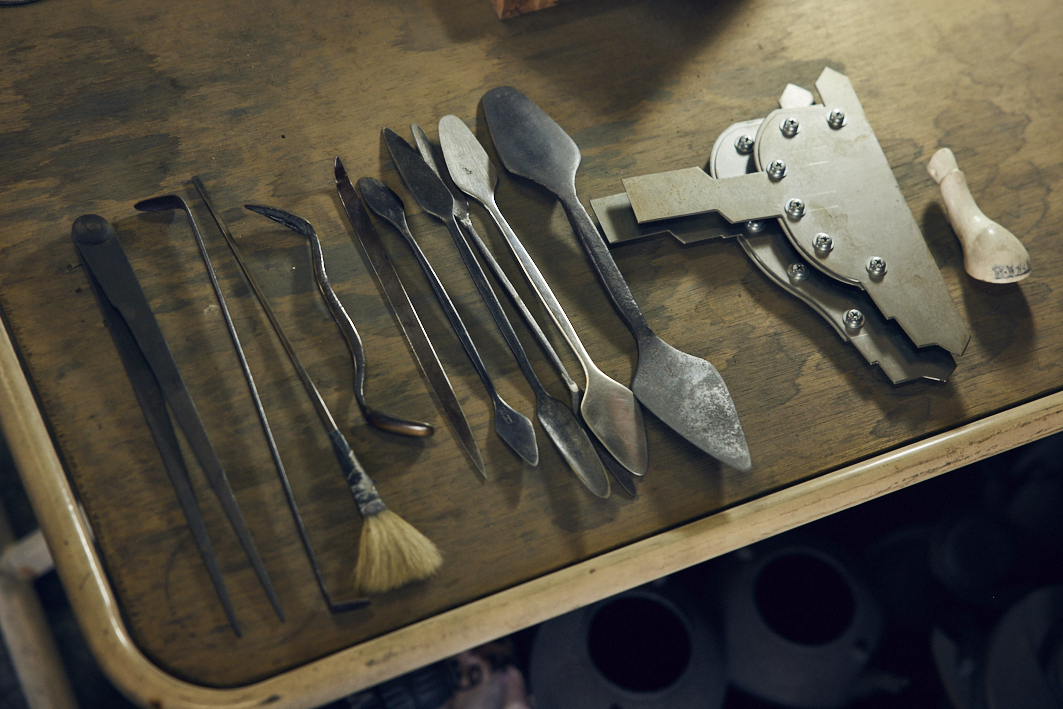
Tools handmade by Yokotsuka for shaping casting molds.
“Once the mold is ready, I pour in molten cast iron all at once. After the iron has cooled and solidified, I take it out of the mold. No matter how long I spend making it, I never know how it’ll turn out until I open the mold. That moment always makes me nervous—even now. And when it’s come out just right, it’s such a rewarding feeling. Unlike mass-produced pieces, even items made from the same design have their own unique texture and finish.”
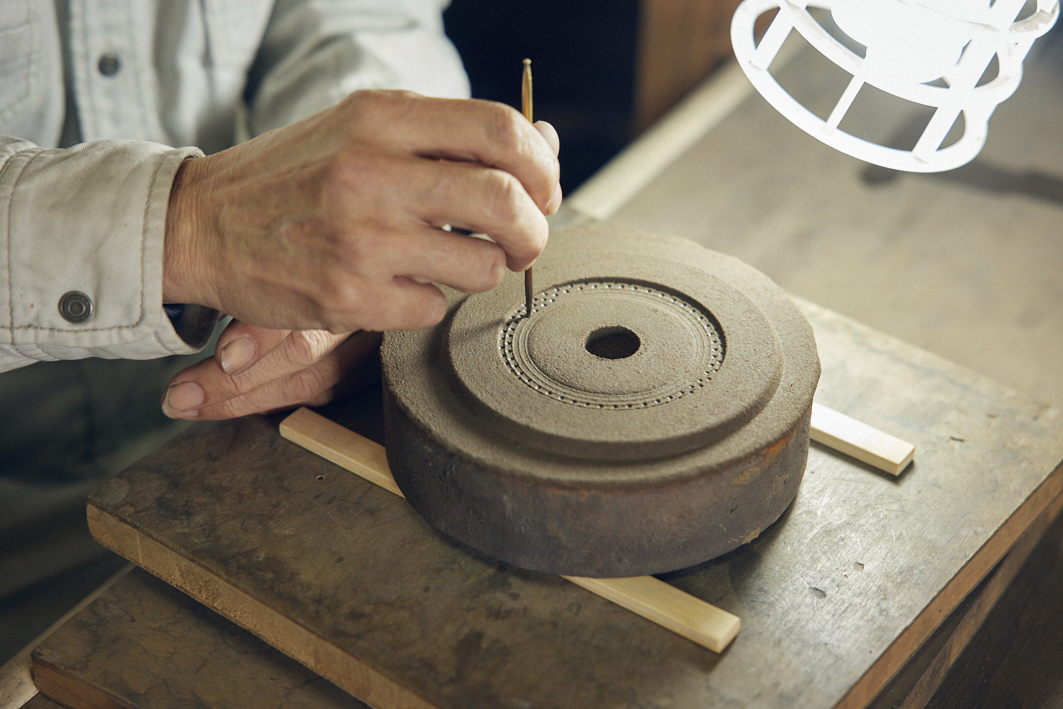
Decorating the lid of a tetsubin with a surface pattern.
Komatsugawa Chuzosho was founded in 1959. After graduating from high school, Yokotsuka joined the family business, following in the footsteps of his grandfather and father as a third-generation caster.
“Back in the late ’80s, there were still a lot of small factories around. It felt natural for me to join the family business. But I’d be lying if I said I never had doubts—when I saw my old classmates going off to work in crisp suits at regular companies, I sometimes wondered, ‘Is this really what I should be doing?’” he laughs. “At the time, we had about 10 workers coming into the shop. I’d watch the older guys work out of the corner of my eye, trying to catch up, trying to do better. I even slept at the workshop sometimes. And little by little, once the senior guys saw I had what it takes, they started giving me more difficult jobs. That’s how I gradually earned their respect.”
Today, Yokotsuka is the only artisan in Tokyo still handcrafting cast ironware for daily use. After 36 years in the trade, the moment that still demands the most focus is when the molten metal is poured into the mold.
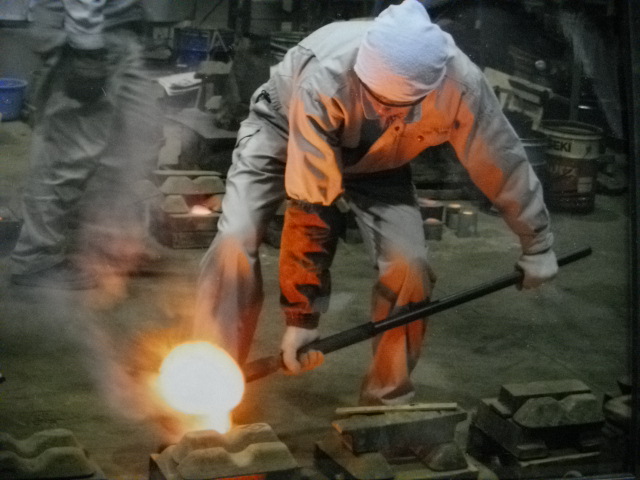
Pouring molten iron into the mold — the most delicate and demanding moment in the entire process.
“We call the molten metal yu (hot water),” explains Yokotsuka. “It gets close to 1,500°C. Pouring it into the mold brings a whole different kind of tension compared to inspecting the final product. With tetsubin especially, the walls are thin. If the mold or the metal isn’t hot enough, the yu won’t flow evenly, and you’ll get flaws. So I pour it in all at once while it’s still red-hot, making sure it fills the entire mold in one go. What really matters is your ability to judge the temperature as you pour, and the speed of the pour itself. Sure, we have thermometers now, but more important is what you can see with your eyes—knowing instinctively, ‘That’s the right heat,’ or ‘No, still too cold.’ It’s hard to explain in words because it’s all in the body. But when you’ve watched it for years, you start to just know.”
In recent years, Yokotsuka has turned his focus to creating new kinds of cast ironware that suit today’s lifestyles.
“Back in the day, people used large tetsubin—about two liters—to keep on the hibachi (charcoal brazier) all day. But now, hardly anyone has a hearth or hibachi at home. These days, smaller kettles, around one liter, are much more popular. They’re easier to use, and perfect for brewing a pot of tea. And people prefer simpler, more minimalist designs.”
Though the appearance has become more streamlined over the generations, the experience remains unchanged: water boiled in a tetsubin becomes noticeably smoother and more pleasant to drink, even as plain hot water—all with the added benefit of a natural dose of iron.
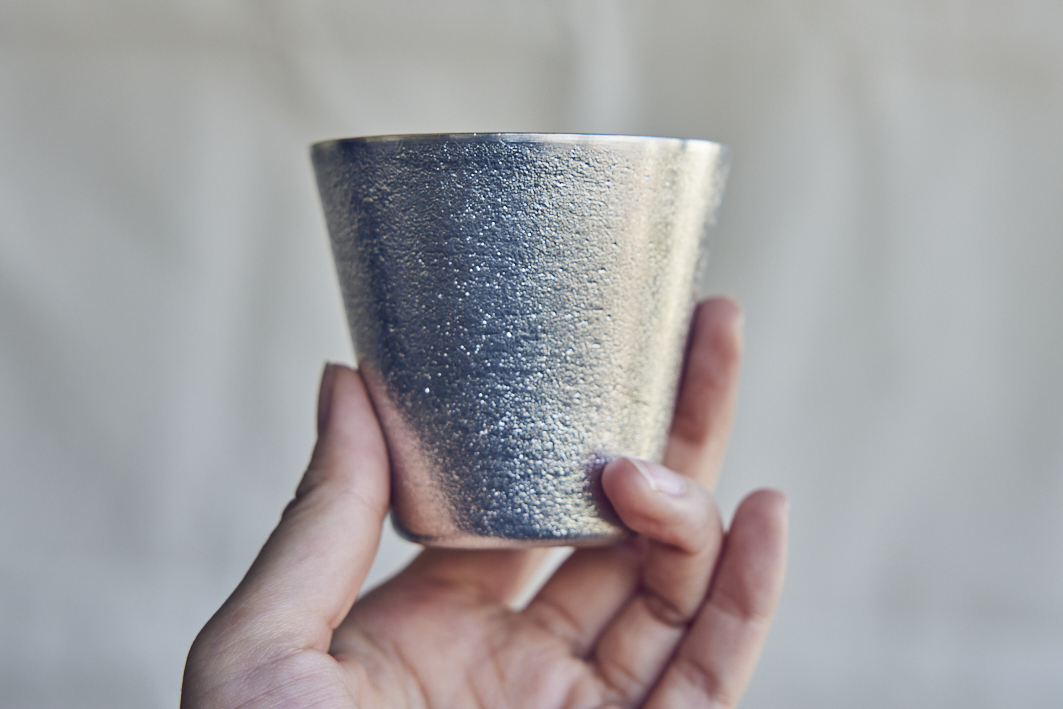
A tin sake cup—lightweight, silver-toned, and lightly textured for a comfortable grip.
Yokotsuka has also begun crafting items from tin, a lighter and more refined metal than iron, including plates and guinomi (sake cups). All have been well received. He’s also taken part in the Edogawa Traditional Craft Industry, Academia, and Public Project, collaborating with art university students to explore new forms. Through that, he’s created entirely new shapes: bookmarks that double as bookbands, accessory stands, flower holders, and smartphone rests.
“Tin melts at around 250°C, so it’s easy to handle. It’s also soft enough to bend, which really opens up the design possibilities. Recently, students have been suggesting all sorts of ideas that make the most of tin’s flexibility. Their thinking is fresh, and honestly, I’d never come up with those designs myself. They’re always surprising and inspiring.”
In 2022, Yokotsuka took the national certification exam for casting technicians—and passed, becoming a certified Level 1 Casting Technician.
“When you work for a company, you get promotions or formal recognition. But in our kind of work, there’s not really anything like that. I’m over 60 now, and I thought, ‘Where do I stand, really?’ So I decided to challenge myself. Thankfully, I passed—and I thought, maybe I’ve really developed a certain level of skill after all,” he says with a modest smile.
Careful, consistent, and hands-on, Yokotsuka continues to face his craft with quiet determination. And he shows no sign of slowing down.
Photos: Honna Yuka
Introduction of the Artisan
Founded in 1959, Komatsugawa Chuzosho casting company is led by Yokotsuka Yutaka, who oversees the design and production of each unique iron kettle. Unlike mass-produced kettles, each piece has a distinctive texture and finish. The company also offers modern lifestyle items such as small iron kettles and tin sake sets.
・Komatsugawa Chuzosho - Edo Tetsubin Kobo
・3-1-1-2F Komatsugawa, Edogawa-ku, Tokyo
